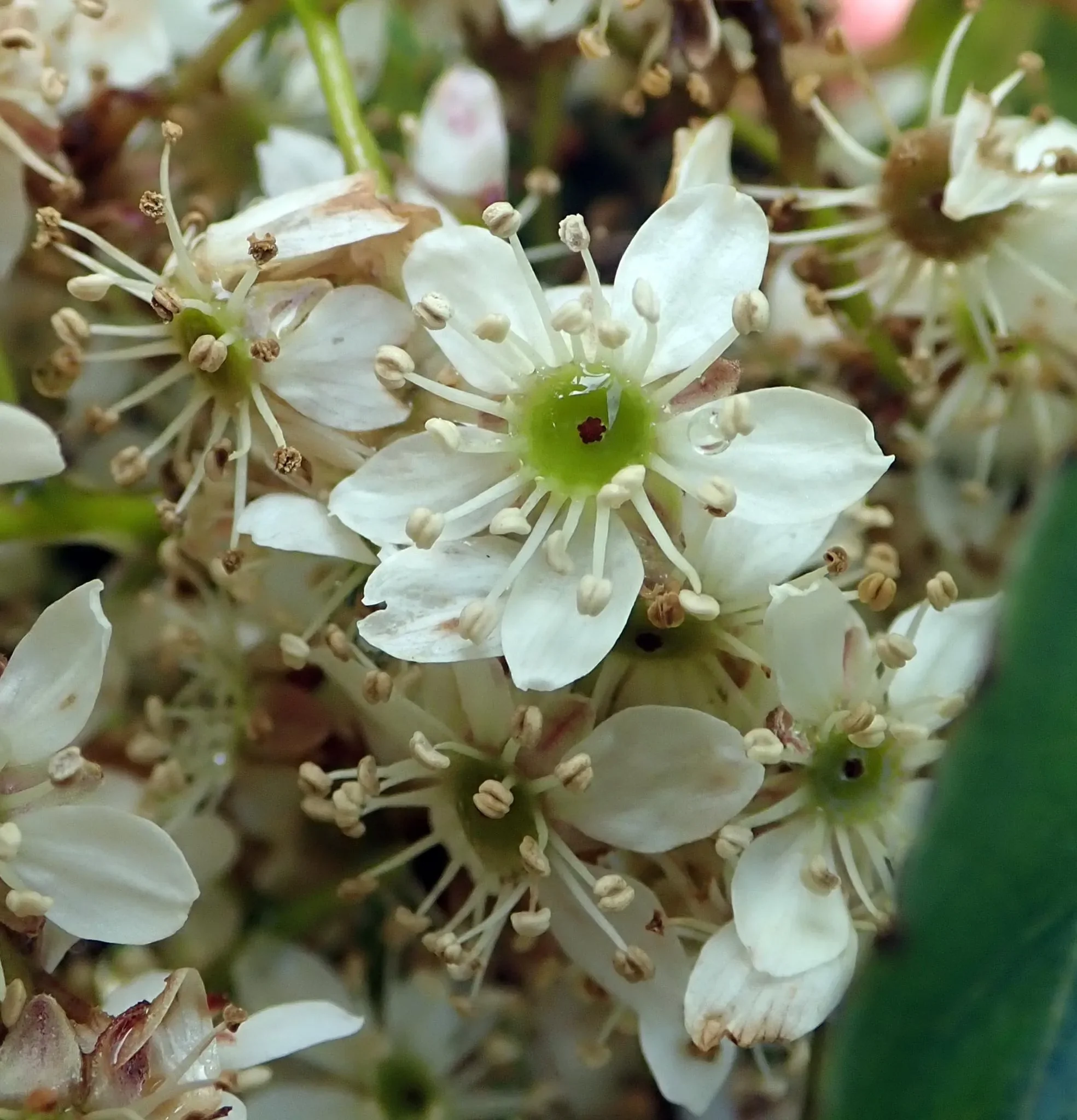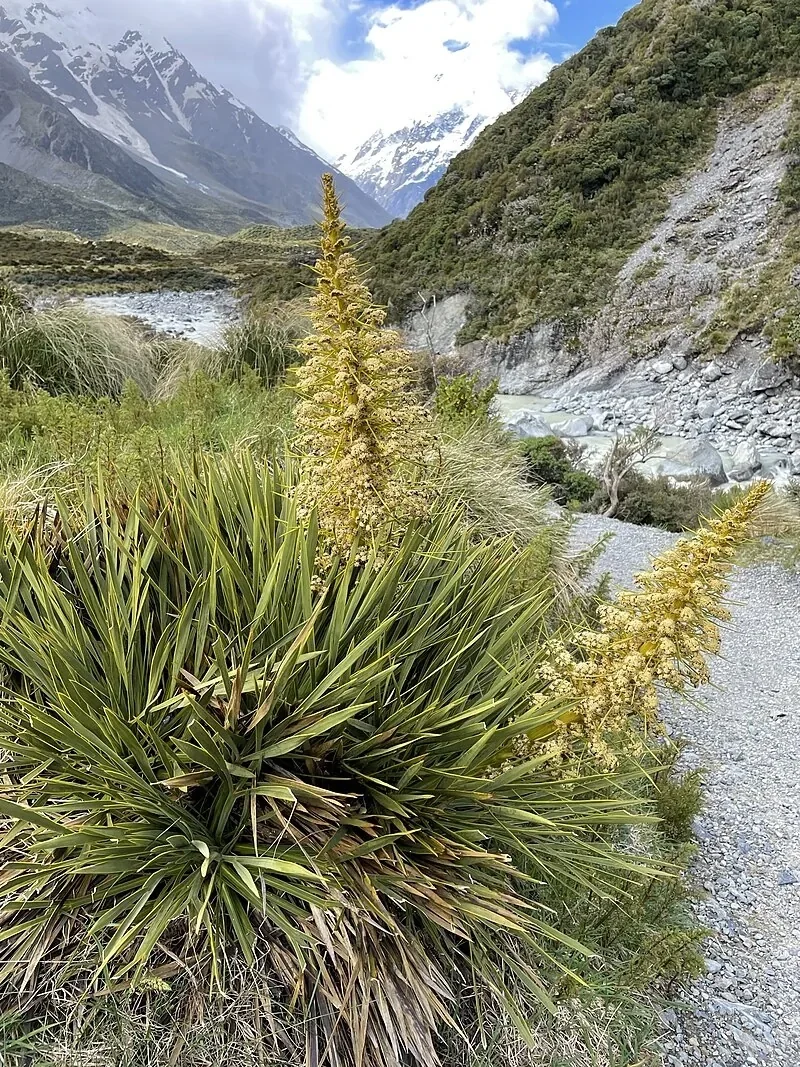
Bush Lawyer
Rubus cissoides
Introduction
Introduction Overview
Rubus cissoides , also known as bush lawyer, is a vigorous climbing or scrambling plant native to New Zealand. It is recognized for its prickly stems, compound leaves, and edible red berries. This robust vine plays an important role in forest ecology, providing food and shelter for native birds while its strong, flexible stems were traditionally used by Māori for binding and construction. Its sweet berries are an edible food source for wildlife and humans. native trees .

Plant Description
Botanical Features
Bush Lawyer ( Rubus cissoides ), also known as tātarāmoa, is a species of flowering plant in the Rosaceae family, native to New Zealand. It is a perennial scrambling or climbing vine that can reach lengths of up to 10 meters or more, sometimes climbing over 15 meters high in forests. Young stems are covered in hooked, reddish prickles, especially on the underside, while mature stems are typically unarmed and hairless. The main stems can be stout and reach up to 150 mm in diameter. The leaves are compound, either palmately or ternately, and are smooth and hairless. They have 3-5 leaflets, which can vary in size and shape depending on the plant's age and geographical location. Leaflets are generally lanceolate or oblong, 6-15 cm long and up to 6 cm wide, with sharply toothed edges and pointed tips. Petioles and petiolules also have hooked prickles. The plant produces white (rarely cream) flowers in much-branched panicles, which can be up to 800 mm long. Flowering occurs from September to November. Rubus cissoides is dioecious, meaning individual plants have either male or female flowers. From December to April, it bears orange-red to red berries, which are drupelets up to 12 mm in diameter.
Quick Facts
Quick Facts Overview
| Scientific Name | Rubus Cissoides |
|---|---|
| Height | Up to 6 meters (20 ft) as a climber |
| Spread | Spreads several meters; climbs or scrambles over other vegetation |
| Water Needs | Moderate; prefers moist, well-drained soils |
| Light | Partial shade to full sun |
| Frost Tolerance | Moderate; tolerates light frosts |
| Salt Tolerance | Low; not suited to coastal exposure |
| Growth Rate | Fast; vigorous climber in suitable conditions |
| Lifespan | Perennial; long-lived in forest settings |
Climate Best Suited to
Rubus is native to New Zealand and thrives in the country's diverse climate conditions. It adapts well to various regional climates throughout the country.
Regional Suitability
| City | Climate Suitability |
|---|---|
| Whangārei | Ideal |
| Auckland | Ideal |
| Hamilton | Ideal |
| Tauranga | Ideal |
| Rotorua | Ideal |
| Gisborne | Ideal |
| New Plymouth | Ideal |
| Napier | Ideal |
| Whanganui | Ideal |
| Palmerston North | Ideal |
| Wellington | Ideal |
| Nelson | Ideal |
| Christchurch | Ideal |
| Dunedin | Ideal |
| Invercargill | Ideal |
Natural Habitat
Bush Lawyer ( Rubus cissoides ), also known as tātarāmoa, is a vigorous climbing or scrambling plant endemic to New Zealand. It is widespread across the North Island, South Island, and Stewart Island, showcasing its adaptability to diverse environments.
Key Habitats Include:
- Lowland and Montane Areas: It is typically found in lowland and montane areas, where it is a common component of forests, scrub, and on the margins of wetlands.
- Forest Edges and Disturbed Ground: Bush Lawyer thrives in disturbed areas, forest margins, and regenerating bush, often climbing high into the tree canopy to reach sunlight.
- Wetland Margins: Its presence on the margins of wetlands indicates its tolerance for moist conditions.
Preferred Conditions:
- Moist, Sunny Environments: This plant thrives in moist, sunny environments. While it can adapt to various soil types, it prefers well-draining soil with good organic content, performing best in loamy or sandy soils.
- Soil pH: It can tolerate a range of soil pH levels (acidic, neutral, and basic), but extreme acidity or alkalinity may hinder its growth.
- Light: It requires sunlight and cannot grow in heavily shaded areas, often climbing to find light.
The vigorous growth and climbing habit of Rubus cissoides underscore its ecological importance in contributing to the biodiversity and structural complexity of New Zealand's native forests, providing food and shelter for native birds and invertebrates.
Plant Conservation
Bush lawyer ( Rubus cissoides ) is common from lowland to montane forest margins and is assessed as Not Threatened . As a vigorous native bramble it typically benefits from light and disturbance, and conservation concern is low. Nevertheless, retaining native shrub and forest edges, limiting stock access, and controlling invasive vines preserves the mixed tangles where bush lawyer naturally forms. Its flowers and fruit support native invertebrates and birds, so maintaining continuous habitat promotes healthy, self‑sustaining populations.
Soil Requirements
Rubus prefers well-draining soil with good organic content. It can adapt to various soil types but performs best in loamy or sandy soils.
Water Needs
Rubus requires moderate watering, especially during establishment. Once established , it becomes more drought-tolerant.
Light Requirements
Rubus grows best in full sun to partial shade, depending on the specific species and local climate conditions.
Temperature
Rubus is well-adapted to New Zealand's temperate climate and can tolerate both warm summers and cool winters.
Planting Guide
When to Plant
The best time to plant Rubus is during spring or autumn when soil temperatures are moderate and rainfall is reliable.
How to Plant
Dig a hole twice the width of the root ball and slightly deeper. Place Rubus in the hole, backfill with soil, and water thoroughly. Mulch around the base to retain moisture.
Ecological Role
Wildlife Interactions
This plant plays an important ecological role in New Zealand's native ecosystems. It provides habitat and food for native wildlife and contributes to ecosystem health and biodiversity.
Uses and Applications
Rubus has various practical and ornamental uses. From traditional Māori applications to modern landscaping, this versatile plant serves multiple purposes.
Traditional Uses
Historically, Rubus was used by Māori for medicinal purposes, food, and cultural practices. These traditional uses reflect the deep knowledge of native plants.
Landscaping Uses
Landscaping Uses Overview
This plant is highly valued in landscaping for its aesthetic appeal and practical benefits. It can be used in various garden styles and landscape applications.
Seasonal Care
Spring
Spring is the ideal time to plant Rubus as the soil warms and new growth begins. Water regularly to establish roots and apply a light mulch to retain moisture.
Summer
During summer , Rubus may require additional watering during dry spells. Monitor for pests and provide shade if needed in hot climates.
Autumn
Autumn is perfect for transplanting Rubus as the cooler temperatures reduce stress. Reduce watering as growth slows.
Winter
Winter care for Rubus involves minimal maintenance. Protect from severe frosts if necessary and avoid overwatering.
- Plant near climbing supports
- Apply light mulch
- Water regularly to establish roots
- Monitor for drought stress
- Provide shade in hot climates
- Check for pest infestations
- Transplant established plants
- Reduce watering as growth slows
- Collect seeds for propagation
- Protect from severe frosts
- Avoid overwatering
- Minimal maintenance required
Pruning
Pruning Techniques
- Prune to control size and remove dead stems
- Train on trellises or supports as needed
Regular pruning maintains plant health and desired shape. Remove dead , damaged, or crossing branches to improve air circulation.
How to Grow Bush Lawyer
Bush Lawyer is a vigorous climbing or scrambling plant native to New Zealand. It is recognized for its prickly stems, compound leaves, and edible red berries. This robust vine plays an important role in forest ecology, providing food and shelter for native birds while its strong, flexible stems were traditionally used by Māori for binding and construction. Its sweet berries are an edible food source for wildlife and humans. Understanding its propagation methods is key to successfully growing this unique species.
From Seed
Propagating Bush Lawyer from fresh seed is a viable method, though germination can be slow and may require stratification. Collect ripe berries in late autumn or early winter. Clean the seeds thoroughly to remove any fleshy pulp. Sow the seeds in a tray filled with a well-draining seed-raising mix, lightly covering them. The seeds typically require a period of cold stratification (e.g., refrigerate for 2-3 months) to break dormancy. Maintain consistent moisture in the seed tray and keep it in a warm, sheltered location. Germination can take several weeks to months after stratification. Once seedlings have developed a few true leaves, they can be potted into individual containers and grown in a sheltered environment before planting out.
From Cuttings
Semi-hardwood cuttings are a reliable method for propagating Bush Lawyer, ensuring that new plants retain the exact characteristics of the parent. Take 10-15 cm cuttings from healthy, semi-hardwood stems in late summer or early autumn. Remove the lower leaves and dip the cut end in a rooting hormone. Insert the cuttings into a well-draining propagation mix (e.g., sand and perlite). Keep the cuttings in a warm, humid environment, out of direct sunlight, perhaps under a plastic dome or in a propagator. Rooting typically occurs within 8-12 weeks. Once rooted, the new plants can be potted on and grown in a sheltered environment until they are ready for planting.
Pests and Diseases
Common Pests
Rubus is generally resistant to most pests due to its native adaptations. However, it may occasionally be affected by common garden pests such as aphids or scale insects.
Disease Prevention
To prevent diseases, ensure good air circulation around Rubus and avoid overwatering. Remove any diseased plant material promptly to prevent spread.
Cultural Significance
Traditional Uses and Values
Rubus cissoides , commonly known as Bush Lawyer or tātarāmoa in Te Reo Māori, holds significant cultural importance, particularly for the Māori people of New Zealand. Its cultural significance stems from a variety of traditional uses. Māori historically used Rubus cissoides for a wide range of medicinal applications. Infusions and decoctions made from its bark and leaves were used to treat abdominal pains, diarrhea, stomach aches, sore throats, chest congestion, and colds. It was also valued for its affinity with the female hormonal system, used to address painful menstruation, induce menses, and assist in expelling the placenta after childbirth, sometimes involving vapor baths. Modern applications in traditional Māori medicine (rongoā Māori) include calming an agitated nervous system, promoting sleep, and soothing teething babies. The plant's edible red berries were a food source for Māori and were also used by early European settlers to make jams and stews. The vines can also yield a juice-like beverage. The strong, flexible stems of Rubus cissoides were traditionally utilized by Māori for binding and construction. Its branches could also be fashioned into traps. The crushed berries of the plant can produce a blue or purple dye. Beyond human uses, Rubus cissoides is vital to forest ecology, offering food and shelter for native birds. The plant's distinctive thorny nature, which causes it to cling tenaciously, is believed to be the origin of its English name, "Bush Lawyer." In Māori poetry and proverbs, tātarāmoa can also symbolize formidable obstacles.
Bonus Tip
Expert Growing Advice
Bush lawyer ( Rubus cissoides ) has vicious hooks - site away from paths and tie new canes along wires to manage direction. Winter gloves and long sleeves make pruning a far happier task!







